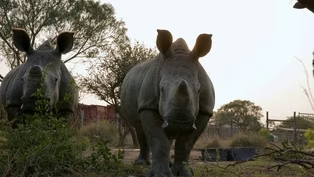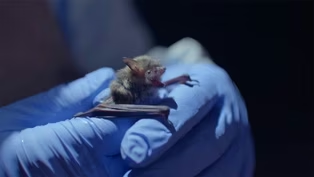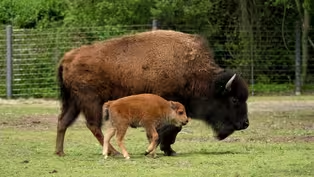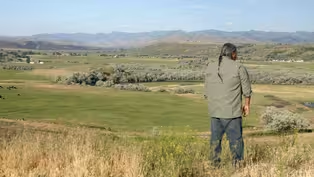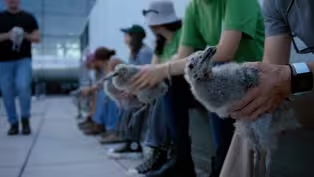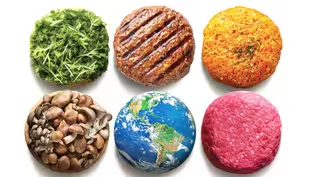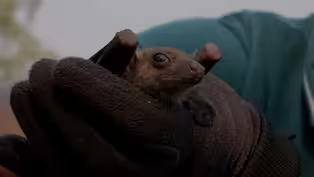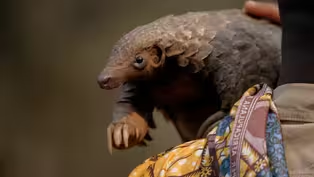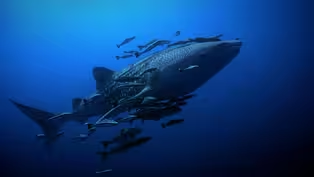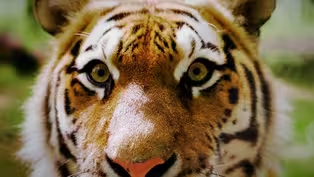
Puffling Patrol | WILD HOPE
Special | 13m 15sVideo has Closed Captions
In the Westman Islands, one community has banded together to save lost young puffins.
Light pollution confuses and disorients seabirds around the globe, luring them towards land — and potentially dangerous situations. In the Westman Islands off the southwest coast of Iceland, however, one community has banded together to save lost young puffins.
Problems playing video? | Closed Captioning Feedback
Problems playing video? | Closed Captioning Feedback
Major support for NATURE is provided by The Arnhold Family in memory of Henry and Clarisse Arnhold, Sue and Edgar Wachenheim III, The Fairweather Foundation, Charles Rosenblum, Kathy Chiao and...

Puffling Patrol | WILD HOPE
Special | 13m 15sVideo has Closed Captions
Light pollution confuses and disorients seabirds around the globe, luring them towards land — and potentially dangerous situations. In the Westman Islands off the southwest coast of Iceland, however, one community has banded together to save lost young puffins.
Problems playing video? | Closed Captioning Feedback
How to Watch Nature
Nature is available to stream on pbs.org and the free PBS App, available on iPhone, Apple TV, Android TV, Android smartphones, Amazon Fire TV, Amazon Fire Tablet, Roku, Samsung Smart TV, and Vizio.
Buy Now
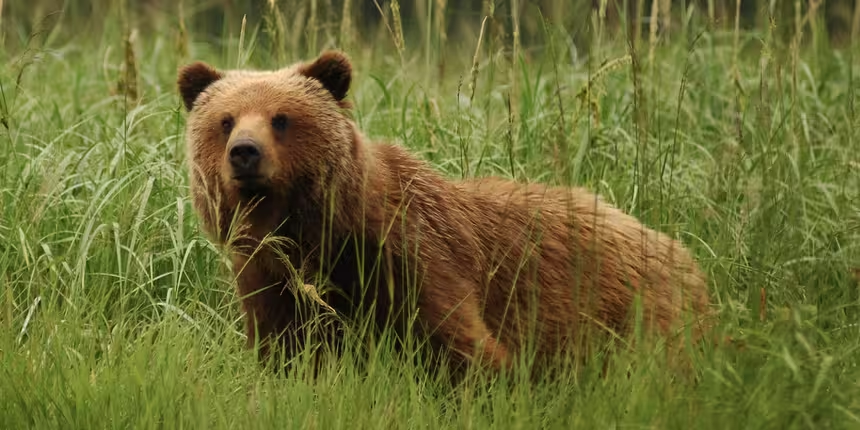
Explore More Ways to Watch
Bring the beauty and wonders of wildlife and natural history into your home with classic NATURE episodes.Providing Support for PBS.org
Learn Moreabout PBS online sponsorshipMore from This Collection
WILD HOPE is a new series of short films that highlights the intrepid changemakers who are restoring our wild places and sparking new hope for the future of our planet.
Video has Closed Captions
How does a densely populated nation like Singapore transform into a lush green oasis? (14m 51s)
Video has Closed Captions
For decades, rhinos have been the face of poaching. (16m 28s)
Video has Closed Captions
As a deadly fungus devastates North America’s bats, scientists are testing new ways to save them. (14m 47s)
Video has Closed Captions
Sixty million American bison once thundered across the prairies of North America. (18m 52s)
Reclaiming Bear River | WILD HOPE
Video has Closed Captions
The Bear River was once a lush area with wetlands, hot springs, and abundant wildlife. (17m 25s)
Building for Birds | WILD HOPE
Video has Closed Captions
Millions of migrating birds pass through our yards, but glass windows pose a deadly threat. (16m 3s)
Mission Impossible | WILD HOPE
Video has Closed Captions
Meet the genius behind the plant-based Impossible Burger. (39m 41s)
Pangolin Protectors | WILD HOPE
Video has Closed Captions
Due to the demand for their scales, pangolins are the most trafficked animal in the world. (12m 24s)
Way of the Elephants | WILD HOPE
Video has Closed Captions
Elephant migration corridors in India are a necessary thoroughfare for one of the largest animals. (15m 11s)
Whale Shark Homecoming | WILD HOPE
Video has Closed Captions
A renowned spiritual leader is inspiring fishermen to become guardians of the world’s biggest fish. (16m 49s)
Video has Closed Captions
The artificial intelligence keeping tigers at bay. (14m 31s)
Providing Support for PBS.org
Learn Moreabout PBS online sponsorship♪ (puffin vocalizing) (wings flapping) (water splashing) ♪ KIM: So a baby puffin is called a "puffling," which is really cute.
They're really good swimmers, not so great fliers.
(wings flapping) When a puffling is fledging, it can get very distracted and end up flying towards the lights of the town.
It happens once a year and people know when it's coming.
There's always so many.
It really does take a village to rescue these pufflings.
We will check them over, and then release them back into the wild.
Every puffling counts.
(wings flapping) ♪ The town of Vestmannaeyjar is very unique.
It's surrounded by big, tall mountains that were created out of volcano lava, which jut right out of the sea, and there are puffins in sort of every crevice that you can find.
Millions of birds each year come and nest and build a life just like we do, here on the island.
(beaks clacking) The puffins here mate for life.
They search for each other, they get separated, they find each other again.
They are very similar to humans in a way.
NARRATOR: For every person living on Iceland's Westman Islands, there are roughly 400 Atlantic puffins.
Up to 20% of the world's puffin population breeds here in summer.
(puffin vocalizing) But globally, they are in decline, and endangered in Europe.
Every year, biologists like Lucas Canas count the newest generation of birds, the pufflings.
LUCAS: They're very funny.
They have lots of personality.
I just wanted to work with these birds to know more about them and they are just really awesome.
We are just checking out the breeding success around every colony.
NARRATOR: Puffin parents arrive at the islands to homestead after nearly a year at sea.
They reuse a burrow or dig a new one and carefully construct a nest inside.
LUCAS: It can get quite deep.
We have some burrows that go like three meters inside the cliff.
We use these cameras that are attached to this long tube.
They lay one egg, only one, and they incubate the egg.
NARRATOR: Six weeks later, a baby puffling hatches.
The parents raise it together, taking turns to find food.
LUCAS: Using these goggles we can actually see how they're growing up and if they are ready to just fledge.
♪ When it's big enough, it's gonna start to try to get out of the nest.
NARRATOR: After three long months living underground, the puffling emerges, ready to take flight.
LUCAS: They don't actually just jump from the end of the cliff.
They are just running down, flapping their wings a little bit until they just finally start taking off.
NARRATOR: To avoid predators, pufflings attempt their first flights under the cover of darkness.
But nighttime these days is not so dark.
(light switching on) ERPUR: Light pollution is something people really don't think much about, but puffins, they are attracted to the light.
This is the first time they actually fly in their life, so it's bound to be problematic for some.
NARRATOR: For more than 40 years, biologist Erpur Hansen has studied the puffins here and watched them mistakenly flap into town.
ERPUR: We basically live in a seabird colony.
It's only two to three hundred meters away from the harbor.
I think it was in the thirties when there was only one light in town, that's where all the pufflings landed.
NARRATOR: Pufflings use the moon's glow to find the sea, but the town's lights overpower the moon.
KIM: Because the town of Vestmannaeyjar is so isolated, it can be the only light that the pufflings will see aside from the Moon.
(wings flapping) NARRATOR: This kind of light pollution is a problem all over the world.
It interferes with birds' ability to navigate at night.
Some will circle light sources until they run into windows or collapse from exhaustion.
♪ To combat the problem, more than 50 cities in North America and seven European nations have passed anti-light pollution legislation.
But Vestmannaeyjar requires a more homegrown solution.
KIM: Our town have made great efforts to reduce the lighting around puffling season but even a single light can attract pufflings.
(car honking) Because the town of Vestmannaeyjar is a fishing port, it's really impossible to turn off every light.
Obviously there's a lot of boats that come in and out of the island.
We don't want things like boats crashing and cars crashing.
♪ NARRATOR: The result: thousands of fledglings fly into town every summer and get trapped.
KIM: Pufflings rather are not great fliers when they're first born.
They have to flap their wings really, really hard.
LUCAS: They have denser bones so they can actually just get stuck there and die.
NARRATOR: But the people of Vestmannaeyjar aren't going to let that happen.
The villagers have a plan to save their beloved birds.
(kids laughing) SIGURFINNUR: Kids, it's time!
Chop chop!
I started going for puffling catching when I was a kid with my father and then my big brother.
I have been doing it for 45 years.
When I got kids myself, as soon as they could work, or run, I started taking them.
♪ NARRATOR: Finnsi and his family are going on Puffling Patrol.
KIM: Puffling Patrol is the community going out pretty much every second of the day, searching for pufflings that may be weak, disoriented, or injured, collecting them, checking that they're okay.
NARRATOR: Families all over town make Puffling Patrol an annual tradition.
And have done so for almost a century.
♪ SIGURFINNUR: Probably they will all starve to death if we don't catch them.
We're not gonna let that happen.
It's our duty to go out and rescue the pufflings.
(wings flapping) NARRATOR: Each family works as a team all night to save wayward birds.
(wings flapping) SIGURFINNUR: We stay up to maybe three, four, sometimes longer.
Before the school starts, every kid can stay up late and sleep until noon.
♪ NARRATOR: Patrols last the entire puffling season, as long as six weeks.
In that time, the town saves as many as 7000 birds.
SIGURFINNUR: For those nights you go out, you can see smiling parents and you can see smiling kids.
Everybody's running around with the boxes.
For us it's just not rescuing the pufflings, it's just something you do.
Everybody likes it here in Vestmannaeyjar, especially me, I'm in love with it!
NARRATOR: Each morning, the patrols bring rescued birds here, to the Sea Life Trust Puffin Hospital.
KIM: Once the families drop them off to us, we will do a health check.
We'll do an avian flu check and we'll weigh them and if they need to be admitted, then they'll come to us and we'll do further examination.
How's he getting on?
TOM: I think he's doing quite well.
So um, firstly we want to make sure that they're nice and settled on the water, which he is.
His wings are nice and tucked in and he's sat with his chest out.
KIM: Okay.
Let's see if you're hungry.
There you go.
In our care, we make sure that the pufflings are properly fed, we feed them capelin and eel.
We will make sure that their bellies are very full so that they're ready for release.
(wings flapping) He looks good.
Very positive.
Maybe we can release him soon then.
TOM: Yeah.
NARRATOR: With the species in decline, every puffling is important.
♪ Most Atlantic puffins live in Europe, where populations have crashed by nearly 70% in the last 50 years, mainly due to food scarcity.
Warming oceans drive away the coldwater food that puffins need.
KIM: With rising sea temperatures, the fish may migrate to colder temperatures.
So it's really difficult for the adults to go out and get the food, such as eel and capelin, to feed the pufflings so they can get enough nutrients to grow and survive out in the wild.
NARRATOR: Other puffin colonies have been hit hard by shortages of fish.
ERPUR: They have to eat half their body weight per day when they're raising chicks.
And so when it gets too warm then you get 55% reduction in chick production.
So that's a lot.
NARRATOR: But the Westman Island birds are going strong.
And every puffling the patrol brings in helps Erpur and Lucas learn more about the colony.
LUCAS: Okay.
Where did you find these pufflings?
SIGURFINNUR OSKAR: Just in the middle of town.
LUCAS: And they look okay?
Or they were like.
SIGURFINNUR OSKAR: Yeah, they were running.
ASDIS: Yeah, they're okay.
LUCAS: Okay, let's check.
Yeah.
NARRATOR: Lucas bands the pufflings with small rings, so they can be identified later.
LUCAS: Perfect.
Super.
Done.
ERPUR: For over 60 years, we ring the pufflings to find out where they go and how long they live, how things might turn into the future.
NARRATOR: More than 24,000 pufflings have been banded here to date.
Questions, like where they go in their first year, are finally coming into focus.
These banded birds have been found as far away as Canada and Denmark.
LUCAS: This year I think we've banded like 420 pufflings or something like that.
NARRATOR: All thanks to the villagers who went out on patrol.
LUCAS: It's very nice to work with the children here in this community.
They're very lovely, they're very helpful and something that I will always remember for sure.
Thank you for bringing in the pufflings.
KIM: Without the community, we wouldn't know about injured pufflings.
We wouldn't be able to rescue and rehabilitate them and they wouldn't be able to release them.
PRODUCER: KIM: Throw it off a cliff.
(laughs) We like to throw the birds really high in the air because their wings are still trying to catch the wind.
♪ It's really exhilarating releasing a puffling and seeing them kind of go off into the wind and into the sea, ready to live the rest of their life.
It's really quite exciting to know that you've given that puffling a chance.
♪ (wings flapping) ♪ SIGURFINNUR: We all love it.
You never get too old to rescue pufflings.
This is part of who we are.
(wings flapping) Every puffling counts.
Yes, of course every puffling counts.
♪ ♪ ♪ ♪

- Science and Nature

Explore scientific discoveries on television's most acclaimed science documentary series.













Support for PBS provided by:
Major support for NATURE is provided by The Arnhold Family in memory of Henry and Clarisse Arnhold, Sue and Edgar Wachenheim III, The Fairweather Foundation, Charles Rosenblum, Kathy Chiao and...

